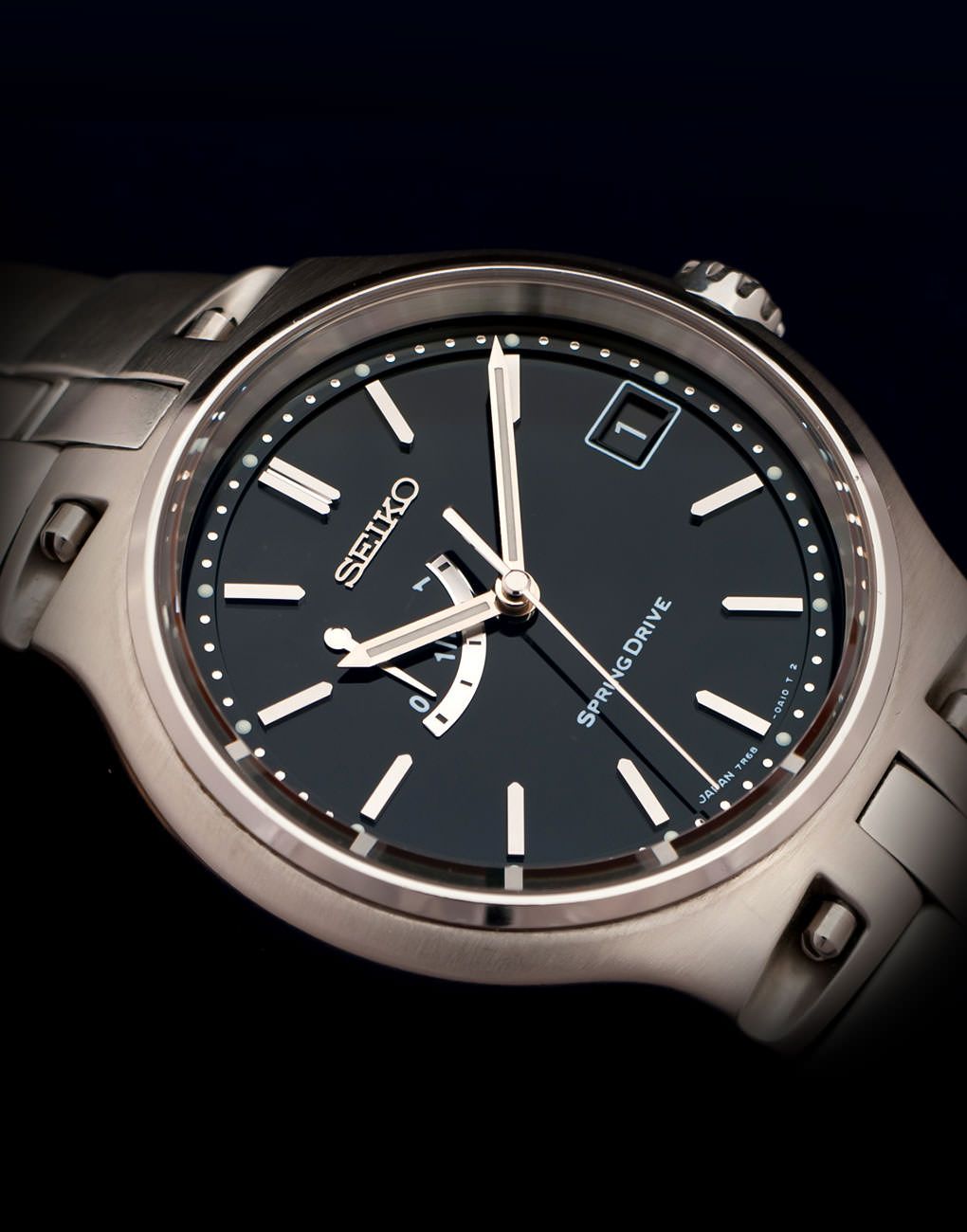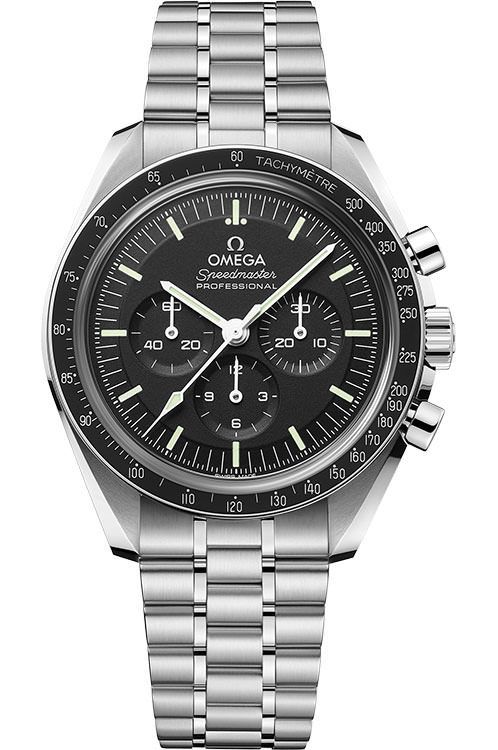Round-UpLegends Of Haute Horlogerie: Five Timekeeping Milestones That Changed The Course Of Watchmaking History
The world of horology is full to the brim with timepieces that are celebrated for their exquisite designs and top-notch craftsmanship. However, only a handful of them enjoy cult status and have played an instrumental role in defining modern watchmaking. Here’s a look at five such legends
May We Recommend
Today, there is no dearth of timepieces that can be easily categorised as coveted. With extraordinarily accurate movements, innovative materials, and a variety of features and complications to boast of, these watches are no less than a symbol of modern technological advancements and ground-breaking innovation. However, if you consider timekeepers that are truly iconic, there are only a handful of them that have attained such status and glory. These timepieces and watchmaking achievements have not only made a significant dent in the field of watchmaking, but have also achieved horological immortality, so to speak. Here, we take a look at five such watchmaking phenomena, which have become a source of pride and joy for their maisons, as they continue to be reinvented to this day.

The fully-synchronised perpetual calendar
IWC’s Da Vinci Perpetual Calendar Chronograph
To understand the significance of the IWC Da Vinci Perpetual Calendar Chronograph, we will first have to get acquainted with what was going on in the horological industry even before this legendary watch was born. The quartz revolution of the 1970s had brought haute horlogerie to its knees and the sales of high-end mechanical watches had plummeted. The demand was abysmally low and it was rare to find watch collectors who were willing to pay a hefty amount of money for such watches. However, as several brands were going bankrupt, there were a few, such as IWC, who continued to craft mechanical watches and fought hard to stay afloat. It was in a bid to stay relevant that IWC, in 1985, released the Da Vinci Perpetual Calendar Chronograph.

Developed by legendary clockmaker Kurt Klaus, the watch was presented with a bold profile and one of the most complex complications of the industry—the perpetual calendar. However, the design or functions of the watch were not the show-stealers. It was rather the ease of using the perpetual calendar that stole the limelight. Instead of having to feature a host of different pushers to adjust all the displays separately, Klaus created a completely synchronised perpetual calendar module where all the settings could be done via the main time-setting crown. Apart from its user-friendly mechanism, the module was quite easy to produce and could be affixed on basically any movement. In the case of the model released in 1985 (reference 3750), IWC attached the module to Valjoux 7750 that they heavily modified to create calibre IWC 79261. All these factors led not only to the immense success of the timepiece but also established the brand as a formidable challenger to the quartz watches. The Da Vinci Perpetual Calendar Chronograph played a crucial role in resurging the charm of mechanical movements and helped the industry avoid a total collapse.
As pioneers of the modern perpetual calendar with integrated adjustment, IWC have continued to master the complication, which has become an essential part of their repertoire today. This signature feature is seen across their collections—including the Pilot’s Watch and Portugieser. However, it continues to enjoy pride of place in the Da Vinci line, its original home.
The first and only watch worn on the Moon
Omega’s Speedmaster Professional Moonwatch
Omega Speedmaster wasn’t originally meant to go to space. It was primarily designed as a sports and racing watch but it gained popularity among pilots who used its chronograph complication to track flying essentials such as fuel consumption and trajectory. This affinity for the Speedmaster by flying professionals perhaps foretold its future significance in the realm of space exploration. In 1964, NASA wrote to several watch manufacturers from across the globe and requested ‘high-quality chronographs’. Only four brands responded, including Omega who sent their third-generation Speedmaster. NASA tested all the watches and put them through extremes of heat, shock, vibration, vacuum, and so on, and only the Speedmaster passed all the tests. In 1965, it officially went into space for the first time, worn by Virgil ‘Gus’ Grissom and John Young during the Gemini 3 mission.
After the Speedmaster’s first successful space mission, Omega began developing its fourth-generation and made some tweaks in the design. The timepiece now featured an asymmetrical case with twisted lugs, in order to provide extra protection for the crown and pushers. The watchmakers also added the word ‘Professional’ on the dial for the first time on this edition. The Speedmasters with references—105.012 and 145.012—are the very models worn by Apollo 11 astronauts on the moon. Also, it wasn’t the only time that the Speedmaster made it to the celestial body. The timepiece was a part of five other successful moon landing missions of NASA and offered outstanding performance without any glitches each time it went into outer space. Since then, the Speedmaster has arguably become the most popular chronograph of all time.
Over the years, the timepiece has gone through several transformations with Omega releasing automatic models, reduced sizes, a sapphire crystal version in place of hesalite crystal used in the Moonwatch, and different dial colours and case metals. However, the most insignificant update came last year, when the watchmakers equipped the timepiece with their latest Master Chronometer calibre 3861. The COSC- and METAS-certified watch comes with all of the Omega’s technology, including a co-axial escapement, silicon parts for antimagnetic properties, and a stop-seconds mechanism. Running at 21,600vph, it can store a minimum power reserve of up to 50 hours. The new Speedmaster Moonwatch Professional doesn’t just showcase Omega’s obsession with accuracy and durability but it also pays a fitting tribute to one of the greatest achievements of humankind.
The mechanical watch with a quartz oscillator
Seiko’s Spring Drive
At the turn of the century, when the world was busy getting anxious about the Y2K bug, something happened that just shook the whole horological industry. In 1999, Seiko, who had, nearly three decades ago, played an essential role in the advent of the quartz revolution, released their Spring Drive watch movement that was and still is one of the most fascinating, distinctive, ingenious and accurate calibres of the modern era. Invented by the brand’s watchmaker and scientist, Yoshikazu Akahane, this mechanism brings together two completely different worlds—as a mechanical movement, but with a quartz regulator. At its core, the Spring Drive is just like any other mechanical movement. It derives its power from an unwinding mainspring, with no batteries involved but instead of using a traditional lever escapement to control the unfurling of the spring, the movement comes with a ‘Tri-Synchro’ regulator, which comprises a quartz oscillator, integrated circuit and electromagnets.
This allows the Spring Drive to achieve much higher accuracy than mechanical timepieces as the latter tend to get affected by environmental influences, such as gravity, temperature changes and shocks. Just to give you an idea, any contemporary version of the Spring Drive comes with a deviation of +/− 1 second per day, which technically amounts to +/−15 seconds per month. Whereas, a regular mechanical movement, with a COSC chronometer certification, is accurate to +/-5 seconds a day, which adds up to 15 minutes in six months. Seiko first introduced this calibre with the launch of their limited-edition SBWA001 model but they later used it to power timepieces from Grand Seiko, which is now a standalone brand. Since then, the Spring Drive has been a staple in Grand Seiko’s watches and it continues to be a testament to the Japanese watch manufacturer’s passion for pushing the boundaries of innovation.
The first square-shaped chronograph watch
TAG Heuer’s Monaco
In hindsight, (then non-TAG) Heuer Monaco had all the perfect ingredients to become one of the most well-known and beloved sports watches of all time. It came with an avant-garde square-shaped case, offered water resistance up to 100m, and it featured one of the first automatic chronograph movements to be created for production—calibre 11. Heuer conceived the movement in collaboration with Hamilton and Breitling and launched it in 1969. Moreover, it was fiercely endorsed by the brand’s ambassador and Formula One racer, Jo Siffert. However, Monaco reached the pinnacle of fame and glory when the King of Cool, Steve McQueen, wore it during the filming of Le Mans. What happened was that Siffert was serving as a consultant on the sets of the movie and McQueen took inspiration from him to play the main character and decided to wear the same jumpsuit as that of the Swiss champion. Not only this, just like Siffert, the actor also wanted to wear a Heuer chronograph watch but instead of using an Autavia, which was usually worn by the racer, McQueen chose the Monaco 1133B for its distinctive and unconventional design. And, the rest is history.
Even after more than five decades since its release, Monaco still remains one of the most unique and distinguishable watches available in the market today. Launched at a time when the industry was flooded with diminutive, round-shaped dress watches, it took a lot of courage and innovation for the watchmaker to go against the norm and present a square-shaped timepiece. It’s this glorious and illustrious history that modern Monaco is carrying forward and it remains a stalwart of the TAG Heuer catalogue.
The first integrated automatic chronograph
Zenith’s El Primero
Zenith El Primero has a cult following and it isn’t at all surprising. Introduced in 1969, it was the first-ever high-frequency, fully-integrated, self-winding chronograph. The watchmakers were unanimously lauded for their innovation and skilful craftsmanship, as instead of just adding a chronograph module to a base movement, they opted to fully integrate the chronograph function within the mechanism. Not only this, unlike most of the chronographs of that time, which came with a cam-actuated chronograph, the El Primero featured a column-wheel chronograph that was much more complex and labour-intensive to produce than the former. Moreover, it ran at the frequency of 36,000vph and was capable of measuring 1/10th of a second. At the time of its launch, most calibres available in the market beat at an average of 18,000vph with some notable exceptions such as Seiko’s Hi-Beat (21,6000vph). Therefore, the release of El Primero pushed the horological industry into a frenzy.

The slender movement—measuring just 6.5mm in height—was housed in a fascinating timepiece, called the A384, which featured a distinctive tonneau-shaped 37mm stainless steel case with a lacquered white-and-black tachymeter dial. Consisting of a conventional panda layout, the display also flaunted an alluring central, red-coloured chronograph hand, a date window between four and five o’clock, and Zenith’s star logo at 12. On top of everything else, the A384 has paired with an integrated metal ‘ladder’ bracelet that was uniquely shaped with open central links.
Not a brand to rest on their laurels, Zenith have continued to refine and perfect the El Primero calibre over the decades, even innovating with highly advanced chronograph functionality. The latest movements from the El Primero family power Zenith’s contemporary chronographs, including those from the Revival series, which began in 2019, to mark 50 years of the El Primero, with re-editions of their historical timepieces.









































